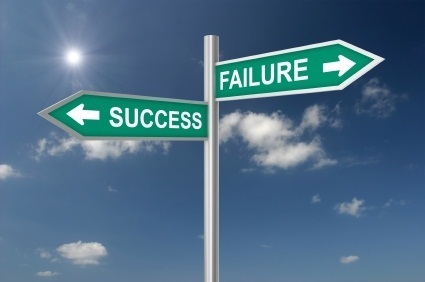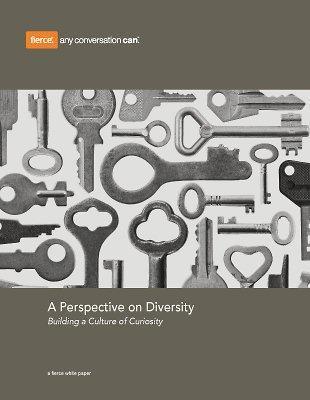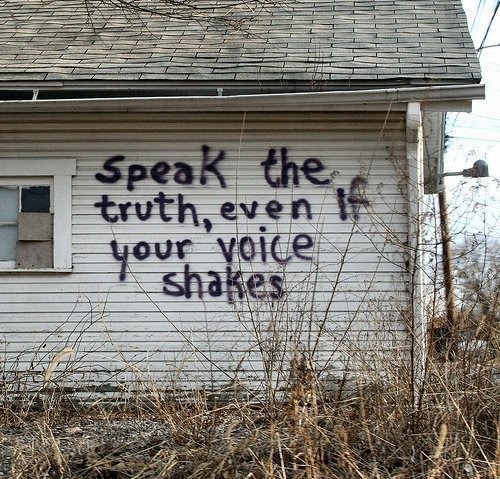Susan Scott's Blog, page 123
October 18, 2011
Talk Less, Listen More: My Challenge for the Week


"The experience of being understood, versus interpreted, is so compelling you can charge admission"
Joseph Pine, author of "The Experience Economy"
What would happen in your world if you talked less and listened more? If a client, colleague or spouse voiced a problem and instead of trying to fix it or give an opinion, you asked "Say more about that"? Say more about the situation. Say more about how you feel about it. Say more about your ideal resolution.
My challenge this week is to do this. I'm going to fight my desire to share my opinion and advice, and instead let others do the talking.
To do this, I'm going to use 3 of the 7 principles of a Fierce Conversation, as tools to achieve my goal and keep me on track.
#1 Let Silence Do the Heavy Lifting
Often I mistake a pause in the conversation as a good time to insert my opinion. In my conversations this week with my colleagues, clients, spouse, friends and family, I want to leave room for silence. I often interpret no one speaking as awkward, when in reality my counterpart might just be thinking. Instead of rushing to fill the void, I'll live in the between space and see what comes.
#2 Be Here, Prepared to be Nowhere Else
To be honest, I sometimes cut to the chase in a conversation because my mind is racing through my giant to-do list. It's mind-boggling to think about what I'm potentially losing by not giving my full attention to the people I'm communicating with.
What didn't my client get to tell me that would have helped me give them even better service? What did my colleague not get to verbalize in our meeting because I was running through a check list? Focus is a skill that I plan on practicing by being present.
#3 Master the Courage to Interrogate Reality
Think of the last conversation you had. At any point during the conversation, instead of asking a question about something they said, did you just make an assumption?
Sometimes we don't focus or ask questions, because we're afraid of what might be said. Filling in the blanks can be so common that we don't realize were doing it. Yet when you line up all those assumptions in a row and look at the time and money lost, the cost to your business and relationships, it can really hit home. Experience tells me that this is scary because it's worth doing!
Is this something you want to focus on? Take the challenge with me and let us know how you do!
For more information about leadership development and training, visit our site (www.fierceinc.com).
October 13, 2011
Honesty IS the Best Policy


Companies that foster and encourage honest feedback make more money than companies who don't. Period. That's the assertion Corporate Executive Board makes in their recent study shared by Harvard Business Review. They found that organizations who rated highly in the area of open communication delivered a 10-year TSR (total shareholder return) of 7.9% compared to 2.1% at other companies. That's impressive.
For folks like myself who work in the area of leadership development, it comes as no surprise. However, I am always thankful when the dots are directly connected between healthy corporate cultures, effective communication, and the bottom line. When employees are supported in telling the truth about what they have witnessed or what they sense without fear of retaliation, leaders are able to make decisions based on ground truth. Not some made-for-TV watered-down version that has little to do with reality and much to do with ensuring we don't come off as a Debbie Downer in our organization.
Truth is (pun intended), we can be truthful in a way that opens doors, enriches the relationship, and encourages the conversation to move forward in a meaningful way. One of my favorite quotes in this area comes courtesy of Edwin Friedman:
"In any situation, the person who can most accurately describe reality without laying blame will emerge as the leader, whether designated or not."
My hunch is that more of us would be willing to speak the truth and hear the truth if we believed it didn't come at the cost of another person, including ourselves.
What prices are you paying for standing on the sidelines and withholding what you really think and feel?
October 11, 2011
Avoiding or Failing at a Conversation – Which is Worse?


No one wakes up in the morning and says, "I want to get it wrong today." We want to be successful. However, fear usually gets in our way. We don't want to look stupid.
For example, when I have an out-of-the-box idea I want to pitch to my boss or a sensitive issue to bring to my colleague, I inherently evaluate if it is worth having the conversation. Can I bear the rejection? Can they bear the idea?
What if I lose my job? What if I lose that project? What if he thinks less of me? What if…what if…
Let's shift our context. What if missing the conversation is more risky than having it?
When you never have the conversation, each party makes up stories about the situation. Whether it is my boss never knowing I deeply care about a project or my colleague never knowing that I want our relationship to be better – neither party can know if I don't have the courage to have a conversation.
That's costly.
It's more economical to have a beautiful, failed conversation. When you have a failed conversation, the kind that just doesn't go as "planned", or you don't get what you hoped, at least you mustered the courage and cared enough to take on the conversation – to bring it to that person. This creates a place to move forward, a jumping board. The next conversation may start with the words,"Last time, I didn't approach it the way that I had hoped to…"
This less fearful approach to conversations is not only a good investment for the individual but also for the organization.
In a recent article in the Wall Street Journal, Better Ideas Through Failure, Tor Myhren, Chief Creative Officer of Grey New York, was showcased for creating the "Heroic Failure" award. An employee receives this quarterly reward by taking a "big, edgy risk". He created this award because he was worried that with the fast growth of the agency, employees were becoming more conservative and slow. Dig a little deeper and that is code for: He doesn't want fear to win. Myhren wants to encourage conversations that might fail, rather than never having the conversations.
What conversation would you have, if you weren't scared to fail?
For more information about leadership development and training, visit our site (www.fierceinc.com).
October 5, 2011
New Report: Perspective on Diversity: Building a Culture of Curiosity


We're pleased to share with you a new Fierce, Inc. report that shows while appreciating diversity is part of the mission statement of many organizations, diversity in and of itself is not the ultimate goal.
A Perspective on Diversity: Building a Culture of Curiosity, now available for complimentary download, explains that by focusing on diversity of thought and ideas rather than on individual characteristics, organizations are able to organically encompass differences.
This paper investigates three critical context shifts that help build a culture of curiosity and position organizations to leverage diversity.
The ultimate goal is the powerful internal think tank created when diverse perspectives are solicited and heard. This new white paper explains how to build a culture of curiosity where fresh ideas lead to innovation, creativity and ultimately the bottom line.
How curious is your organization?
You can download your complimentary copy of A Perspective on Diversity: Building a Culture of Curiosity now.
For more information about leadership development and training, visit our site (www.fierceinc.com).
New Report:Perspective on Diversity: Building a Culture of Curiosity


We're pleased to share with you a new Fierce, Inc. report that shows while appreciating diversity is part of the mission statement of many organizations, diversity in and of itself is not the ultimate goal.
A Perspective on Diversity: Building a Culture of Curiosity, now available for complimentary download, explains that by focusing on diversity of thought and ideas rather than on individual characteristics, organizations are able to organically encompass differences.
This paper investigates three critical context shifts that help build a culture of curiosity and position organizations to leverage diversity.
The ultimate goal is the powerful internal think tank created when diverse perspectives are solicited and heard. This new white paper explains how to build a culture of curiosity where fresh ideas lead to innovation, creativity and ultimately the bottom line.
How curious is your organization?
You can download your complimentary copy of A Perspective on Diversity: Building a Culture of Curiosity now.
For more information about leadership development and training, visit our site (www.fierceinc.com).
September 29, 2011
Has the Focus on the Customer Left the Service Industry?


A couple of weeks ago I went into two different coffee shops – one an independent and one a chain. As I was waiting for my coffee I observed two interactions that left me scratching my head.
The first was with a man who ordered a coffee and a breakfast sandwich. When his order came up he received only half of what he'd asked for and when he stated this wasn't his correct order, the woman looked at him and said "oops". Then silence. No apology. No "Let me make you another one.", no "The next one is on us." The guy looked bewildered and left the coffee shop with his incomplete order in hand.
That same week another gentleman ordered his coffee, admittedly with several ingredients and twists, and when his order came up the server had put in the wrong key flavor although the cup was clearly marked with what he had requested. The server looked at the customer and said, "Oh I missed that, do you want to try it anyway?" Again, no apology, no "Let me get you what you really ordered this morning."
This got me thinking: Has the focus on the customer left the service industry? Do these owners/leaders realize the impact these experiences are having on their businesses? Do they care?
When the livelihood of your company depends on the environment your employees are creating for your customers, shouldn't having effective and engaged conversations be a top priority?
Each employee is a hologram image of the culture regardless if anyone is looking over their shoulder. Personally, I have not frequented either of these places regularly since I witnessed these interactions. Instead, I have taken my purchase elsewhere.
As a leader, I am responsible for setting expectations and then holding myself accountable to live up to those expectations for my employees. If I've done my job well this should have a domino effect on others so they can hold themselves "able" and sustain a culture that keeps customers coming back.
All parties had their DNA on these situations. First the employee for not putting the customer first, and then the customer for allowing lower standards to become the acceptable norm.
For more information about leadership development and training, visit our site (www.fierceinc.com).
September 22, 2011
Is Chaos Good For Your Organization?


In high emotion situations such as mergers, layoffs, even a massive wave of new hires, the ebb and flow of an organization can get drastically interrupted. The goal is to keep everything running along, but does it always need to go smoothly?
I'm someone who personally enjoys order. I live life through a checklist. Sometimes, however, life seems to throw a wrench in the works and force you to live in chaos. Is this good for us? Do things need to systematically breakdown from time to time to allow us to step back and gain perspective?
When forced into chaos a rare type of clarity can come to light and an opportunity for a new kind of communication can emerge. The linchpin in whether chaos produces positive instead of negative results depends on what type of conversations take place.
In the case of a merger, the chance for two cultures to blend can be viewed as a real headache yet the amazing opportunity for creating something better is sitting just below the surface. The key is to make communication a top priority.
Chaos is destructive when people are left with little information and begin to make assumptions. We all do this, it's human nature. However, we can acquire the communication skills and practice to combat it.
Communication can also be the bridge that brings order and allows your organization to level out. Hopefully if handled well, the new resulting environment is better than what it was before.
So when you find yourself in a situation, whether on an organizational or personal level where chaos is reigning free, take a moment and breathe. Instead of running for the nearest exit to head back over to the order side of things, explore if there's a chance to learn and communicate more. It may not be comfortable or even enjoyable but it could be incredibly beneficial.
Get curious with chaos. Lean in. It might tell you something order could never explain.
For more information about leadership development and training, visit our site (www.fierceinc.com).
September 20, 2011
Speak the Truth Even if Your Voice Shakes


I know I may be slow coming to the party, but I saw this picture for the first time the other day and it moved me. I can feel the lump in my throat already.
The fact is there are many times in my life where speaking the truth didn't just make my voice shake, I got teary-eyed as well. Truth is so full of emotion it can often take our breath away.
Why is that?
We value authenticity because there is something so refreshing about people who show up like this; it's like fog lifting and the sun shining right, straight down.
We love authenticity because in some ways it can be quite vulnerable. We love vulnerability because it feels real and alive.
Can we be both authentic and vulnerable in our organizations? Is it possible to speak the truth, be authentic and share our vulnerability with our colleagues, with our bosses, with our customers?
It's risky. Tears can form in your eyes, you can get a catch in your throat, your voice can shake – just try it…it's so worth it!
For more information about leadership development and training, visit our site (www.fierceinc.com).
September 14, 2011
3 Steps to Defining Your Corporate Values


Defining your company's corporate values can seem like a daunting task given it's importance in setting your corporate culture. After all, you culture determines how your employees will achieve all those lofty goals you made. While it isn't an exercise to be taken lightly, it doesn't need to be weighed down in process. Follow these 3 steps to uncover your values while fully engaging your team.
Answer 3 Questions. As a warm-up and to get the juices flowing, present your employees with the following 3 questions: Why does {insert your company's name here} exist? What difference do you want to make here? And, finally, who is your customer(s) and how would you want them to describe their relationship with you? With the company?
Ask them to write down their responses and then report them aloud to the team. Be sure to emphasize there are no right or wrong answers. This exercise provides a wonderful opportunity to re-ground everyone in your mission and vision while introducing differing perspectives on why your company and its employees are essential.
Choose 5 Words. Next, distribute to each person a deck of cards containing 15-20 words. Each word should represent a potential value. Some examples could be: Collaborative, Fun, Innovative, Determined, Passionate. Include a couple blank ones for people to write in their own. Your instructions should be fairly light. Simply ask that they choose 5 values that they have either already experienced as a strong asset to the existing culture or identify one that is lacking and could effect positive change. Allow 5-10 minutes for this exercise.
For larger groups, an alternative would be to set-up an online survey. There are many free or next-to-free resources available such as Survey Monkey and Zoomerang. There should be a lot of laughter (and maybe a few tears) at this point given the emotions this tends to draw out. If you don't see any emotions, worry.
Share 1 Story. In tandem with the above or immediately after, ask each person to recall a specific experience at work that illustrates one of his or her values. The powerful act of storytelling cements what is often intangible while galvanizing a team. When everyone has their cards and story prepared, have them stand up and present them. I like to create a large grid with all the values on a whiteboard so folks can clearly see which words are resonating with the group.
From here you can craft your final list based on which words dominated. And when you're ready to share, don't just put the words up. Create some context around your values and make them your own. As an example, here is what Fierce did with our corporate value of "authentic".
Be Real. There is no "faking it" at Fierce. We present ourselves, our capabilities, and our knowledge for exactly what it is and we don't pretend to be anything we are not. We are transparent with each other and our clients and embrace what makes each of us unique.
For a great example of a company who has fully embodied and personalized their values, look no further than Zappos. You can tell they had fun during their process. And so should you!
September 13, 2011
It's Time for a Little New Fashioned Transparency


What if the "super committee" meetings were televised? What if Americans could see our leaders in action? We could see who is willing to risk their political futures for the future of our country. After all, we ask our soldiers to risk their lives…a political career seems so small in comparison.
We are all tired of leaders who need to be right, who have to follow party politics instead of making the right decisions for our country.
Imagine that our country is a beach ball. Every one of us is standing on a different stripe of color and we view our realities, our truths from where we stand. Granted we have a lot of people standing on red and blue but there are a lot of us on green and yellow too.
So, who owns the truth about the color of our country? We all do. And our truths are often conflicting and competing on any issue or challenge.
The fact is, those who can interrogate multiple, competing realities, without placing blame will ultimately become the best leaders, collaborators, decision makers, innovators and politicians.
So let us view the "super committee" in action. Let's see how they lead. Let's watch as they throw it all on the table.Will they cross party lines and stop playing the blame game? Can they allow their learning to be provoked on their most deeply held beliefs in order to find new solutions for our country?
Some entitlements may go away, some may stay, some taxes may be raised, and some may be lowered. All of us need to take a deep look at social programs, education, health care, tax codes…let's have some fierce conversations.
So we'll see who in congress is willing to stake their careers on collaboration, solution, and true leadership. And then we'll vote in the polls.
For more information about leadership development and training, visit our site (www.fierceinc.com).
Susan Scott's Blog
- Susan Scott's profile
- 859 followers



